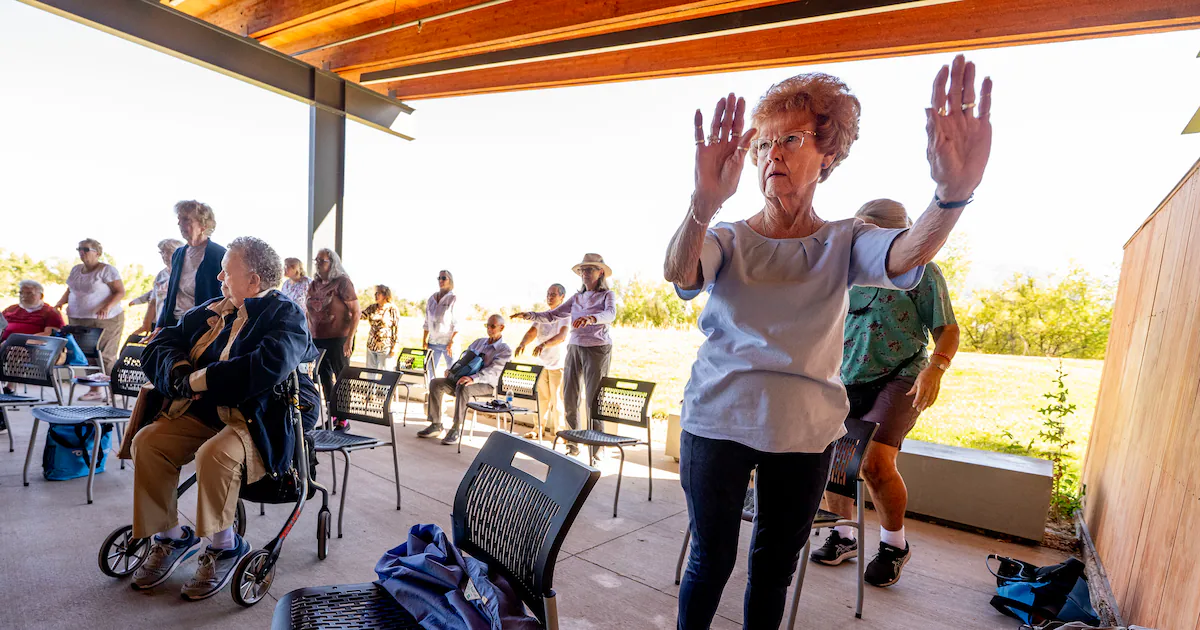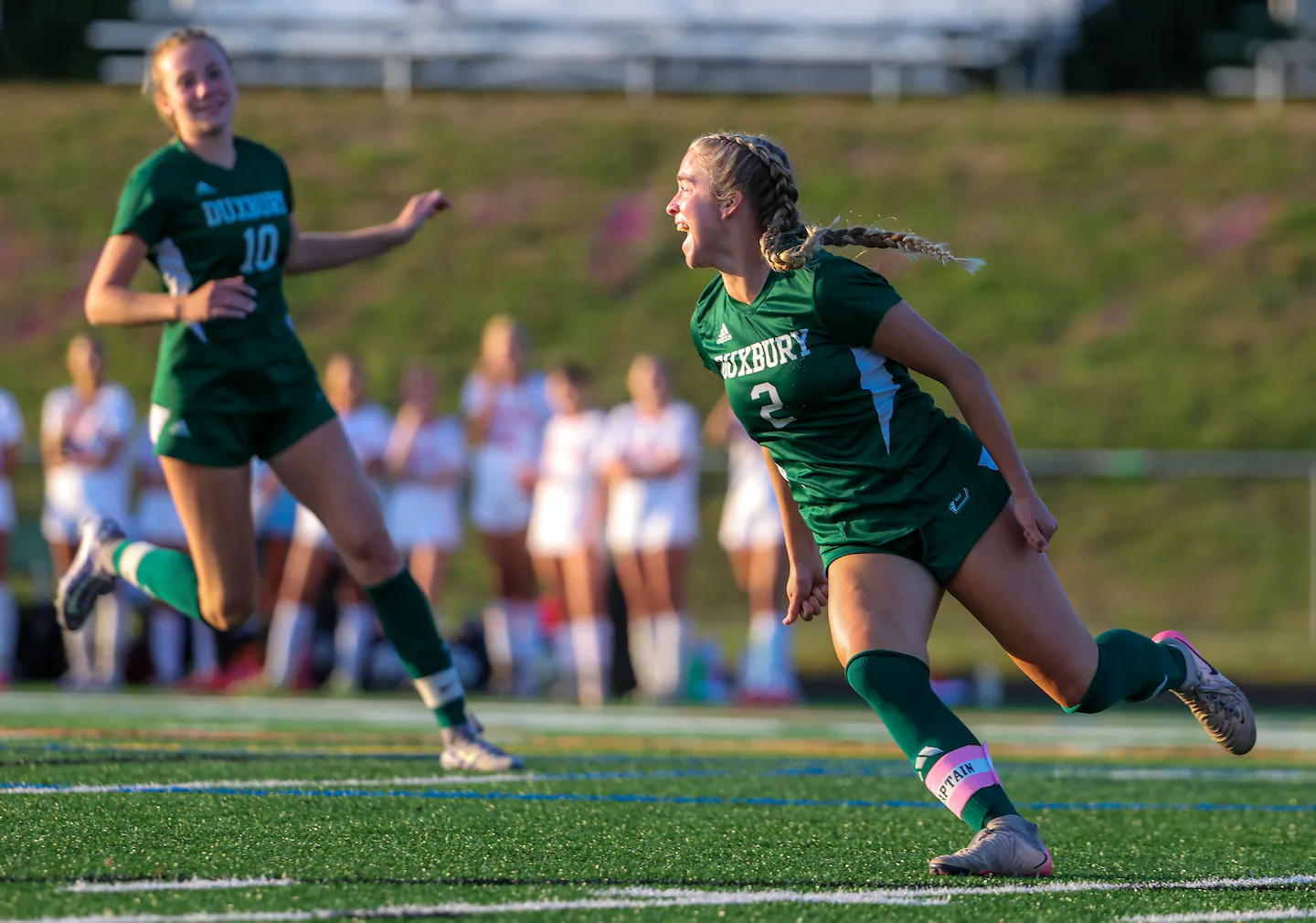
Maurice Wells picked his way carefully across the lot at Wheeler Historic Farm on Tuesday, leaning lightly on the walker he has used for the past couple of years.
It started with a fall when he was coming home in the evening light and tripped on uneven ground. He got up, brushed himself off and figured he needed to be careful. About four months later, though, he fell in his home and a concerned relative insisted he go to the hospital to be checked out.
The diagnosis after numerous tests was no heart attack or stroke, so “See ya. Be careful.”
Wells was at the farmstead in Murray for the Strong and Steady event sponsored by Salt Lake County Aging Services, Intermountain Health and the Salt Lake County Health Department.
Falls can be life-changing and in some cases even life-ending for older adults, so the program focused heavily on fall prevention, with demonstrations, booths, safety tips, muscle strength testing and more.
At 86, Wells said he’s no stranger to the risks of falling; it’s just not something he’s done until the past couple of years. He’s active even now, walking daily. He also goes to the Sandy senior center for lunch on weekdays, because, as he jokes, “cooking for one is no darn fun” and neither is doing dishes.
Wells is grateful that when his wife became frail he put grab bars in strategic locations in their home. Now that she’s gone — Helga died in 2011 — he uses them himself.
How falls change trajectories
The National Safety Council reports that in the U.S., about 3 million adults age 65 and older are treated in emergency departments for fall-related injuries. More than 800,000 patients are hospitalized for them. Falls can be life-altering but are largely preventable.
They are a common problem for older adults, but they’re not a normal sign of aging, according to Afton January, aging services spokeswoman. They can indicate a much bigger problem, whether it’s a medical issue, poor vision, physical environment or related to strength.
And September is a good time to remind people, she added, because winter brings an extra set of vulnerabilities, including wet surfaces, less good daylight and even “clunkier shoes.”
She, like other experts at the event, acknowledge that people who fall often keep it to themselves because they’re afraid of losing their independence. But a fall can be “a catalyst to much greater physical decline,” she said, so people need to talk to their physician and also their personal support system and figure out why it’s happening.
Addressing the reason for falls actually makes living independently more likely, Janene Holmberg, a physical therapist at Intermountain Health, told Deseret News.
Adds January, “Seeking support is, we believe, the best way to help keep people independent.”
Staying fit
Holmberg and Intermountain Home Health therapist Jeremy Brown were teaching the dozens in attendance exercises to build and maintain strength. Participants also learned about tai chi and how it can help and got tips for enhancing their fitness, as well as strength training. They were encouraged to do a tug test to see how strong their arms and hands are — big aids in getting up if you happen to fall.
Emergency medical technicians from the South Jordan Fire Department handed out information and answered questions, while University of Utah Health provided a packet from its Yellow Dot program so that emergency responders can find an individual’s personal and medical information in case of a vehicle crash. The folder is designed to live in one’s glove box.
Mary Lou Arveseth, 83, of Millcreek, wanted to gather any tips she could to avoid falls. She has fallen once before, when she missed a step, and knows how to get herself up, though it feels a bit weird because she’s had both knees replaced.
Besides learning practical things like how to get up, she said she walks multiple times a week at the Millcreek senior center and she’s taken an excellent class from University of Utah kinesiology students on strength training for seniors. Besides being fun, she has seen amazing progress and can now do squats while holding weights.
Her husband, Allan, died a year ago and now she’s focusing on staying strong and independent.
Much of Brown’s job involves home checks to make sure that those who’ve been in the hospital can safely return home if they’re at risk for falls. He and his colleagues look at factors like whether grab bars are needed, lighting is adequate and household fixtures like rugs are actually a tripping hazard.
Medication can make people more likely to fall, but so can low blood pressure, poor balance and vertigo.
Tips for staying on your feet
Holmberg points out that there are extrinsic factors leading to falls, like slippery floors. And there are intrinsic factors, like health conditions. Often when people fall, they blame the odd environmental factor, like a “tree root.” But it’s more likely the problem is something intrinsic, like lack of strength, poor balance or some other physical factor.
That leaves a lot of room for people to improve their likelihood of staying on their feet, she said, because making your body healthy keeps your body healthy. There are things people can do to improve their ability to grow old where they want to, their independence intact.
Nutrition impacts fall risk, in part because it feeds muscles and strength. Protein and fluids are vital.
There were plenty of brochures and helpful hints. For instance, the Centers for Disease Control and Prevention highlights four steps to prevent falls:
Begin a regular exercise program.
Review your medicines with your health care provider.
Have your vision checked.
Make your home safer.
A safe home doesn’t have items that can be tripped over; instead, paths are clear. Small rugs should be removed or made slip-proof with double-sided tape or no-slip pads. Items used often should be reachable without a step stool and bathrooms may need grab bars.
Adequate lighting is a big deal, Brown said. As people age, they may not see well in dimmer light. Night lights are a safety item, too.
Even shoes become a safety tool that protects the feet and prevents slipping.
And finally, remember that anyone can trip or slip or fall. It’s not just a safety issue for older adults, according to the National Council on Aging. Anyone could benefit — and should.



